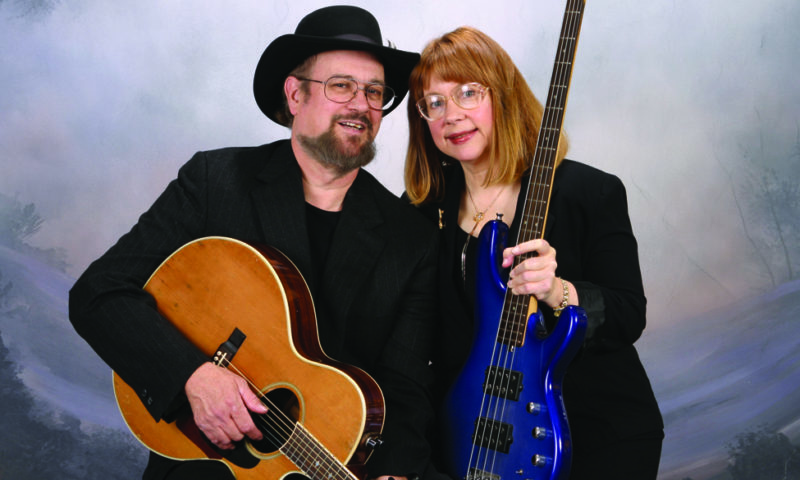Getting to know Josie

It was in 1998 that I first met Josie Emmons. That was the year she became part of Tacoma’s Department of Economic Development. She brought with her a very impressive portfolio of accomplishments in the business, political and cultural world. Part of her job was to interface with the Arts Commission where I was a member. Although we worked for common goals, it was only later, after she had become Josie Emmons Turner, that we learned that we were both poets. We would run into each other at readings and even took the same poetry class at TCC. Finally, as she begins the second half of her tenure as Tacoma’s Poet Laureate, I had the opportunity to become better acquainted with Turner over a cup of tea.
Josie Emmons Turner refers to herself as a “true California girl.â€Â There is historical basis for that claim: at the same time that Paul Revere rode his horse into our history on the east coast, Turner’s ancestors moved north out of Mexico, becoming the first settlers in the land later named “California.â€Â A strong oral tradition kept that history alive over the years (Turner is part of the eighth generation of her family on California soil) so that today it is a rich heritage that Turner brings to her poetry. She writes especially about those strong, pioneer women.
In addition to that larger family history, Turner’s mother had exemplified, while still single, the modern, post-World War II woman. At the close of the war, she moved by herself to Hawaii, traveled in China, and defined her own independence. It is not surprising that Turner finds inspiration in the lives of these strong women who are part of her personal history.
In many respects Turner’s early personal history was the usual mix of imagination and opportunity. She took ballet lessons, memorized poetry, and created an imaginary world in her tree house. She recalls a favorite place in Carmel—a bookstore that also offered a divine cheesecake along with hot chocolate. One of her favorite books was a small volume called “A Child’s Book of Poetry.” In an interesting turn of fate, one of her favorites of “all these great little poems†was Longfellow’s “The Midnight Ride of Paul Revere.â€Â Poetry came to be part of what her mother read to her at bedtime and often at dinner time the family members were asked to recite the latest poem they had committed to memory.
From early childhood until she was about twelve, Turner was in and out of her convent schools frequently, seeming to catch any cold or illness that was going around. Sometimes hospitalization was required. Although she speaks of this very matter-of-factly, it must have required a certain flexibility and resilience.
Turner graduated high school and did her undergraduate work at Seattle University, earning her BA in humanities, concentrating on music (her passion at the time) and journalism (being practical about being able to find a job). Eventually she also earned her teaching credentials and taught in Europe. She left the classroom and became a press secretary for high-powered election campaigns, both state and local. Her resume also includes a stint at a print shop; working for the Philadelphia String Quartet and the Olympic Music Festival; directing the cultural programs in Auburn; and helping, as co-CEO, a youth project designed to help students complete high school and go on for further education. Turner also went on to earn her MFA at the Rainier Writing Workshop at PLU.
Turner is back in the classroom again. This time, she is teaching at Clover Park High School as well as serving as Tacoma’s Poet Laureate. Both in the classroom and in the community, Turner hopes to find ways to create greater accessibility to poetry. In large part this means finding poetry that has a voice that matches that of the reader. In both instances she hopes to offer educational opportunities (see workshop details below) that give hands-on experience in writing poetry as one way to express “compassion and to think of ways to make the world a better place,†the same goal that she sets for her own writing.
When asked how she would sum up her life experience so far, Turner offered a statement from her deep-seated faith: “I am blessed, enormously blessed.â€
June Workshop-“The Author vs The Speaker: doing what’s best for the poem”
Description: How do you maintain an authentic voice in your poems yet have them sing? We will gently discuss one another’s poems and look at the works of some masters.
Dates: Wednesday, June 6 and Wednesday, June 13. 5:30 -7:30. (Public reading June 21.)
Place: William Turner Art Studio, 2926 S. Steel Street, Tacoma. (facility has stairs)
Space limited to 10 poets.
Cost: $45 for both workshops and participation in reading
Registration and Information: Deadline-June 1.
Contact josie.turner.poet@gmail.com. Submit 3 poems, indicating preferred order of workshopping them.  Payment by Paypal or direct check (details established by e-mail). Payment must be received for registration to be considered complete.
A few of Turner’s favorite poets to check out
Robinson Jeffers, Natasha Trethewey, Norman Dubie, Jane Kenyon, Donald Hall, Oliver de la Paz, Kathleen Flenniken, Alan Braden, Terrance Hayes, Quincy Trope, Elizabeth Bishop, Lola Haskins, William Kupinse, Rick Bardot, Kelli Russell Agodon, Michael Magee, Robert Lowell



